
Category Archives: A2 Personal Investigation
Filters
Response to Thomas Ruff
Thomas Ruff is a German photographer born in 1958 (5 years after Calle), he is an considerably conceptual individual of his craft. In his ‘Nacht’ series which he produced over 4 years from 1992 to 1996, Ruff blatantly explored the subject matter of surveillance, stating himself that these were his intentions of the project. In this series of photographs Ruff used his camera as tool of observation and documentation of night-time scenes of suburban and industrial areas in his home city of Dusseldorf. He produced the images with the aesthetic qualities of a long-lens night-vision CCTV surveillance camera.
Here are some examples of the work which he produced for the ‘Nacht’ series…

The green tinted square format surveillance footage aesthetic is something which i wanted to reproduce as a response to the work of Ruff. Here is what I ended up producing in response…
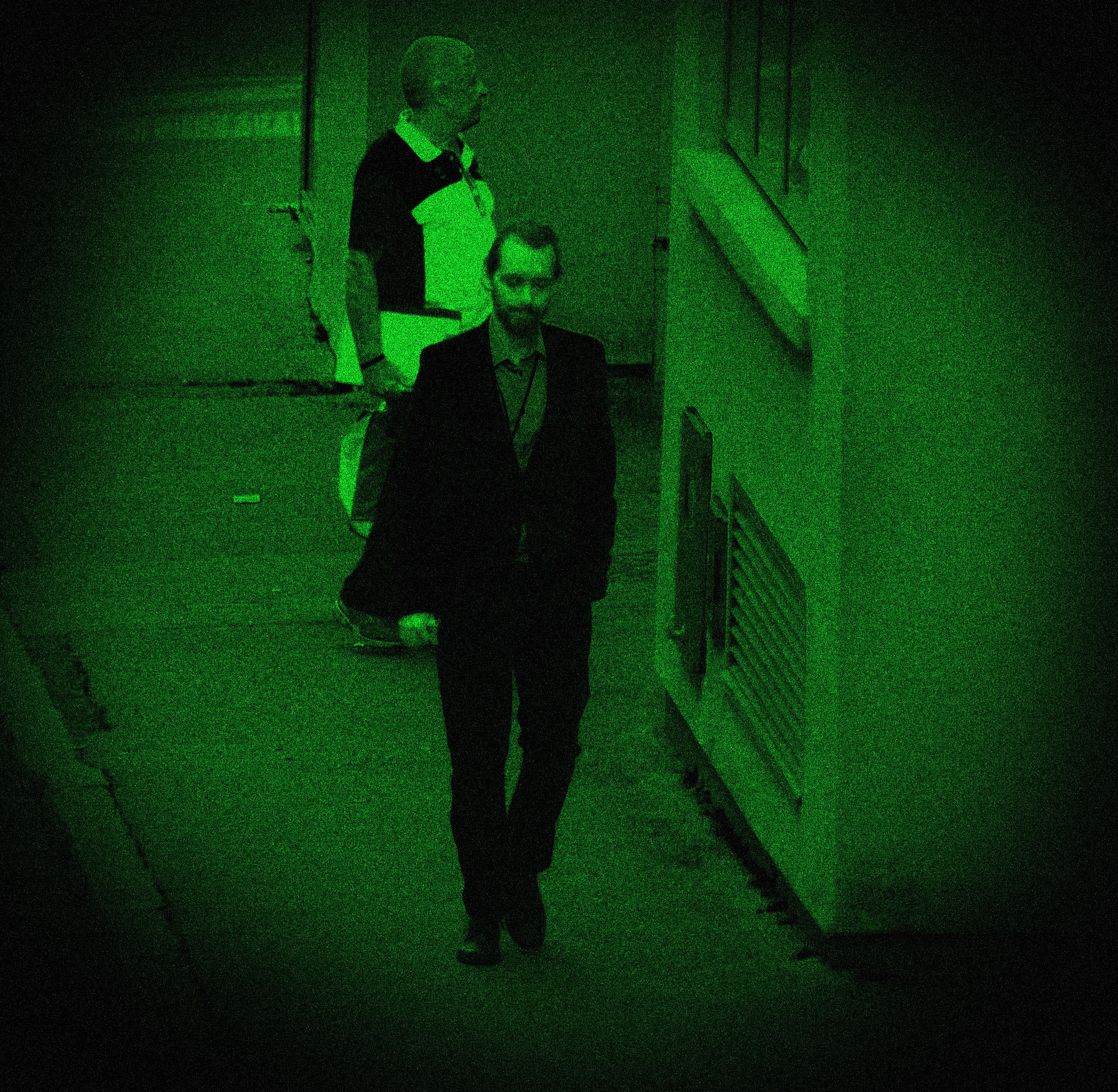
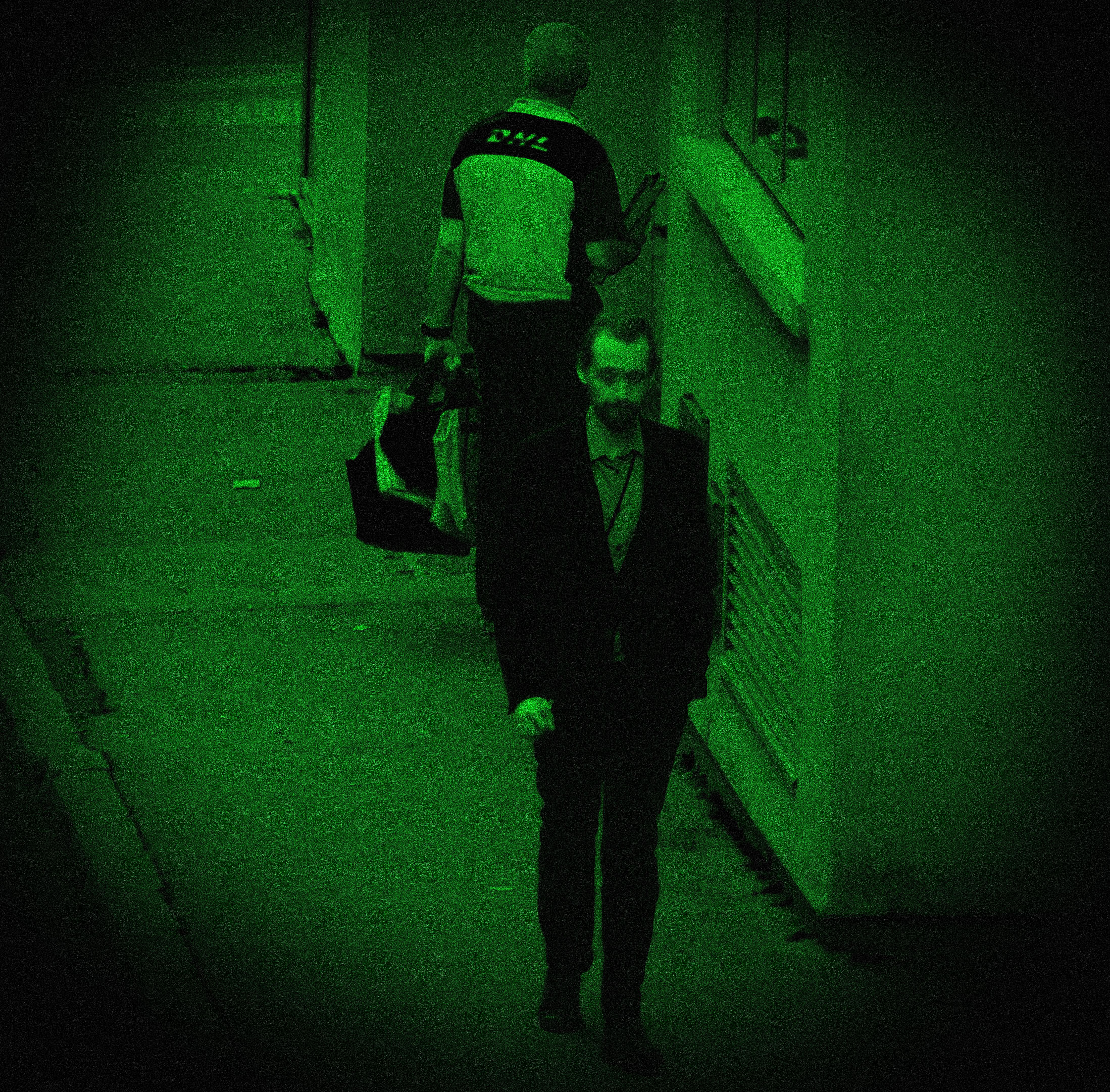
I believe that this reflected the work of Thomas Ruff whilst being more specific to my own project style. Although I was satisfied with these I still wanted to add CCTV camera captions to the images in order to match the visual quality of my other images. Here is what I ended up with…
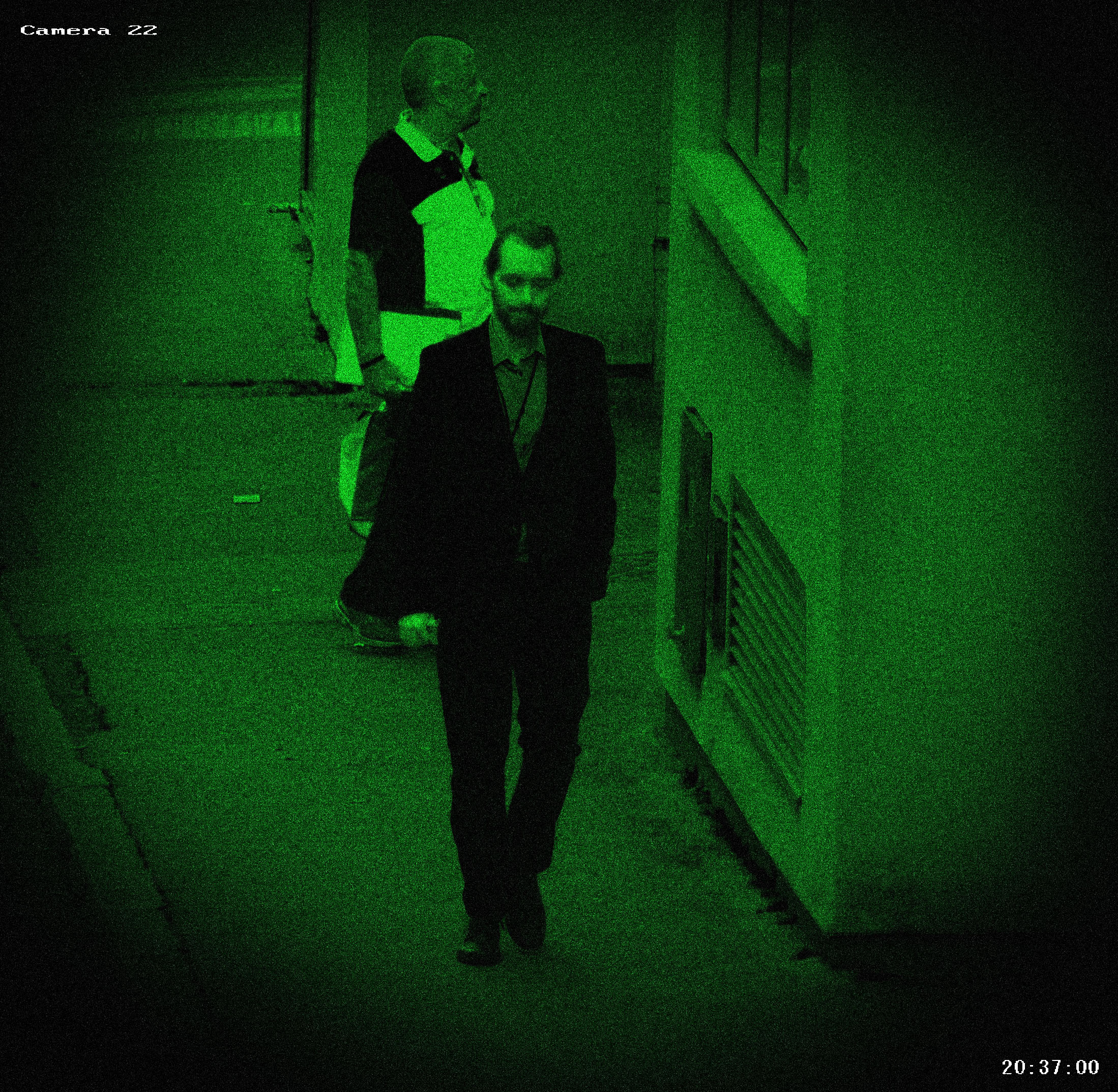
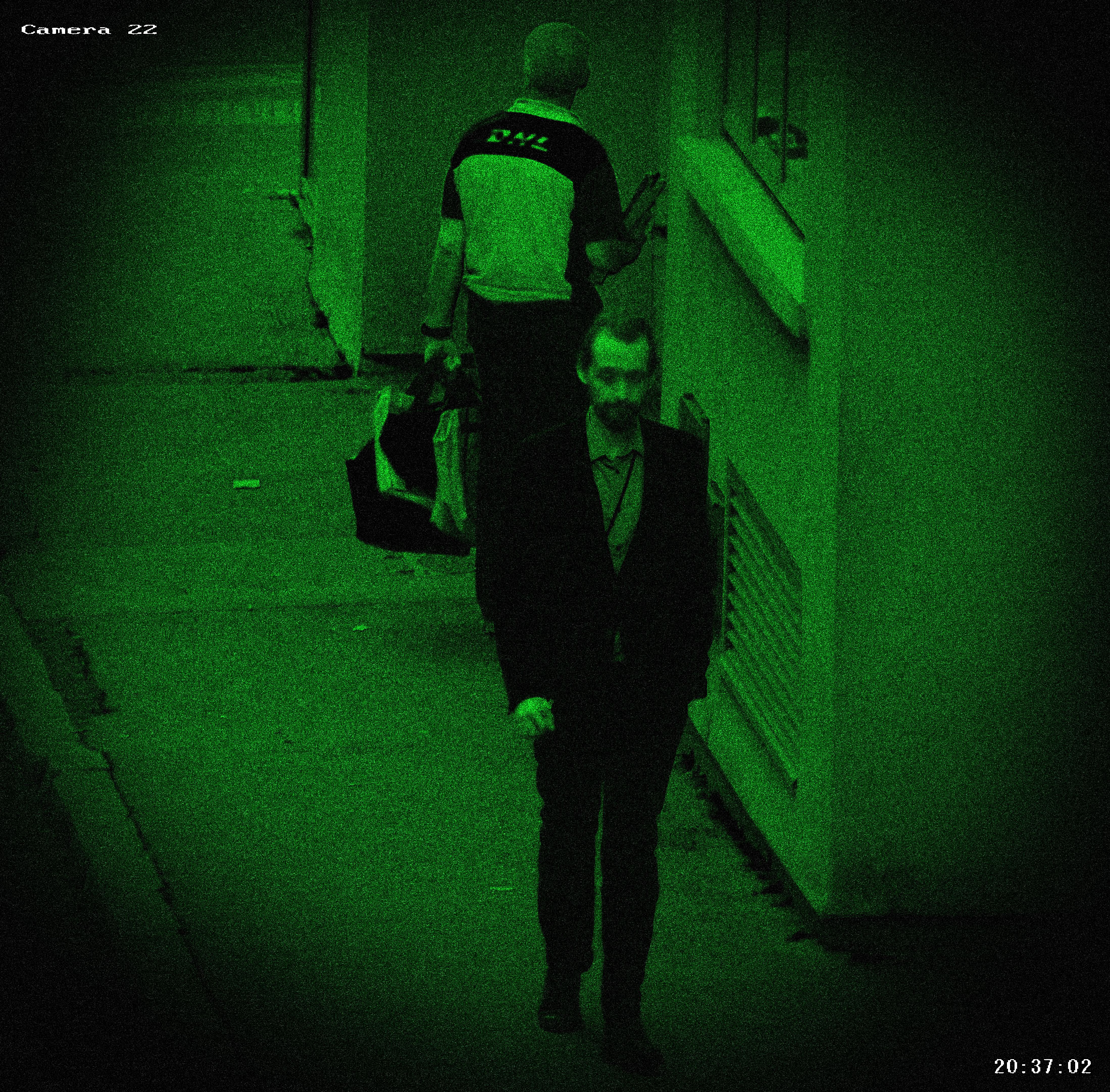
Image Analysis
 Image taken by J Henry Fair: Industrial scars
Image taken by J Henry Fair: Industrial scars
Taken by photographer J Henry Fair, the image aims to highlight the tragic effects that human actions have caused and their impact on our planet. Each image is made purposely beautiful due to the colours which give it an aesthetic quality, however there is a deeper meaning underlying every photo, represented through our ever-increasing demand for energy, which rapidly changes because of our ever-increasing consumerism. This image itself aims at exposing what is left over from the results of our societies demands, by revealing these devastating results Fair hopes to shed light onto people’s perspective of the planet, attempting to make us realize how responsible we are for the environmental future of this planet. Visually the image mixes vibrant and earth like colours together to produce an aesthetically pleasing results, by placing these contrasting colours against each other in an environment that you would not usually associate them together in really sheds light onto the almost permanent scars left behind from our demands and consumerism. By photographing the layers of the mine it portrays the depths that we go to achieve what we want and how deep these scars left behind from it have become, giving us an insight into the sheer size of our global crisis.
By portraying the scarred landscape in such a symmetrical way it almost distracts us from the actual problem at hand and how unnatural it is to see something like this present on our landscape. The use of earthy browns combined with violets and blues can be seen as symbolic to through the unnatural colours, represented by the red and blue chemicals it could be seen as the humans marks that have been placed using chemicals and other means to acquire the materials we desire, however the dark earth brown colours can be seen as the natural landscape which surrounds the areas wherever we leave scars, and how once disturbed cannot be replaced and replenished.
Visually the image is very aesthetic, as the dark mixture of colours such as deep reds, browns and blues compliment each other so that it no longer becomes an earthy texture but a stained and scarred landscape. The layering of the earth hills itself provides a clear perspective into the sheer size of the actual quarry, with each step providing depth into the overall photo, however this is broken up through the use of the road which runs horizontally down the hill, preventing the generic patterns from becoming too overpowering and dull. By doing this no only do it bring the image together but also adds contrast and definition to the piece from the implementation of shadows which surround it.
Technically this image itself has a fairly regular exposure where only dark shadows have been captured and probably a slightly higher shutter speed in order to capture the full quality of the landscape. The road within the image provides the main focal point for the viewer whose attention is instantly drawn towards it due to it being the break of the continual pattern, from there it allows the viewer to explore the rest of the landscape in contrast to the actual pathway itself which seems almost out-of-place. The roads which separate each section of the hill really provide an overall look of aestheticism in the picture as by capture the image any lower would have blocked them out thus resulting in a continual hill of colours.
Artist References For Essay
For my essay I decided to relate two photographers in relation to truth of the camera regarding consumerism. Both Edward Burtynsky and Henry J Fair posed as ideal artists to incorporate due to their imagery being based around industrial scarring and landscape change in the consumerist world. Their styles using a mixture or straight and abstract photograph really appealed to me as I found I could relate more to it, thus using them as examples in my essay would provide further context regarding my chosen topic and how it could relate to my photo book once put together. Here are some quick analysis of each of them:
Edward Burtynsky: Burtynsky is a photographer who specialises in photographing industrial landscapes altering the area through mines and quarries. He provides a very one-sided perspective regarding the treatment of our natural environments, presenting them in an aesthetic but negative light in order to draw in the audience’s attention. Motifs are a clear indication of his work through colours, where the duller greys and browns represent the influence of man’s structures on the area and the vibrant greens and reds represent the beauty of nature as its being intervened by our industrialisation. The presentation of his images are key, as they usually resemble cuts and slashes on the surface of the landscape as a constant reminder of what we have destroyed, usually seen through deforestation and slash and burn techniques. The main focus of his work tends to be based around quarries where he presents the huge impact on our environment through composing them in a menacing way, that almost makes them seem unrecognisable and alien like, portraying his perspective regarding how we have invaded and disrupted our Earth. The the purpose of much of Burtynsky’s work seem to be a plea at raising awareness for how we treat our planet, and does so through the implementation of vibrant and aesthetic imagery which even from a distance draws the viewer in, question what it could be and how it ended up like that. From these images a huge political theme arises, as by only presenting a single sided perspective around a topic it raises viewpoints that could disagree and debate, however by allowing this negativity it draws in attention to the concern and therefore presents itself to others who may not have been aware.
Burtynsky is a photographer who specialises in photographing industrial landscapes altering the area through mines and quarries. He provides a very one-sided perspective regarding the treatment of our natural environments, presenting them in an aesthetic but negative light in order to draw in the audience’s attention. Motifs are a clear indication of his work through colours, where the duller greys and browns represent the influence of man’s structures on the area and the vibrant greens and reds represent the beauty of nature as its being intervened by our industrialisation. The presentation of his images are key, as they usually resemble cuts and slashes on the surface of the landscape as a constant reminder of what we have destroyed, usually seen through deforestation and slash and burn techniques. The main focus of his work tends to be based around quarries where he presents the huge impact on our environment through composing them in a menacing way, that almost makes them seem unrecognisable and alien like, portraying his perspective regarding how we have invaded and disrupted our Earth. The the purpose of much of Burtynsky’s work seem to be a plea at raising awareness for how we treat our planet, and does so through the implementation of vibrant and aesthetic imagery which even from a distance draws the viewer in, question what it could be and how it ended up like that. From these images a huge political theme arises, as by only presenting a single sided perspective around a topic it raises viewpoints that could disagree and debate, however by allowing this negativity it draws in attention to the concern and therefore presents itself to others who may not have been aware.
Henry J Fair:  Much like Burtynsky, Fair focuses on the impact of industrialisation on the landscape. Presenting once again a predominantly negative light upon the issue of consumerism, Fair chooses to instead focus on the more chemical effect of industrial impact of the natural world. Photographing toxic waste and leaked chemicals in a beautiful and aesthetic way, capturing this devastating beauty clearly intends to inform the viewer of how we have chosen to lead our ever-growing needs in the world, disregarding the consequences of our choices. However Fair chooses to use a contrasting motif to that of Burtynsky, instead using the opposite of him, where vibrant colours represent the toxicity of the waste and its destructiveness, and the dull colours being the landscape in its natural state. Fair sees that the only way to make aware the impacts of industrialisation are through its exaggeration, making colours and scenes that aren’t really there a typical portrayal of his vision. This perspective he possesses create mainly one-sided view that disregards the efforts made to help these issues, instead choosing to over-exaggerate.
Much like Burtynsky, Fair focuses on the impact of industrialisation on the landscape. Presenting once again a predominantly negative light upon the issue of consumerism, Fair chooses to instead focus on the more chemical effect of industrial impact of the natural world. Photographing toxic waste and leaked chemicals in a beautiful and aesthetic way, capturing this devastating beauty clearly intends to inform the viewer of how we have chosen to lead our ever-growing needs in the world, disregarding the consequences of our choices. However Fair chooses to use a contrasting motif to that of Burtynsky, instead using the opposite of him, where vibrant colours represent the toxicity of the waste and its destructiveness, and the dull colours being the landscape in its natural state. Fair sees that the only way to make aware the impacts of industrialisation are through its exaggeration, making colours and scenes that aren’t really there a typical portrayal of his vision. This perspective he possesses create mainly one-sided view that disregards the efforts made to help these issues, instead choosing to over-exaggerate.
Reviewing and Reflecting
For this ‘political landscape’ project I am focusing on the theme of surveillance, and how surveillance actually effects the general public, in both positive or negative ways. I intend to focus on three subject matters related to this theme.
One being CCTV cameras which are a man-made tool of surveillance used all over the world (245 million professionally installed video surveillance cameras active and operational globally.)




One subject matter being replicated CCTV footage through the use of high angle street portraits manipulated to have the same aesthetic qualities to that of security camera footage.




And my third subject matter being urban / ‘city birds’ perched up high, this subject matter being a physical representation of surveillance in terms of looking/spying, as these perched birds are looking down onto the goings-on of populated areas.



As you can see with each of my descriptions of my 3 subject matters, I have already began to produce images focusing on these three subjects, and so far I personally believe that the work is successful and has a lot of meaning. In terms of the photographers which I have looked at for inspiration (Thomas Ruff, George K Sullivan and Trevor Paglen) , I believe that the work which I have been producing so far reflects inspiration and ideas which i have drawn from their work and used in my own way. Part of the reason as to why I believe that this project is working successfully so far is because it is a topic which I have great interest in and am very curious about. I think that photography is a great way to explore this political topic as surveillance its self is about looking, so with as a lens based media, requiring vision I believe that this is very well suited. As I stated in my original project specification I intended to produce visually unusual and borderline-abstract images in response to surveillance and the ideas surrounding this topic. I want to create images that will make the viewer question the issues and controversies associated with surveillance, which so far seems to be going in the direction of which I initially intended it to.
I have also then gone on to create composite images using multiple photographs of different subjects…

Keith Arnatt

The Tears of Things (Objects from a Rubbish Tip), 1990-91, colour photographs, selection

Howler’s Hill, 1987-88, colour photographs, selection
Keith Arnatt uses his minimalistic style in ‘The Tears Of Things’ to capture items from a rubbish tip with an aesthetic that forces the viewer to think deeper than the object in the image. It provides questions such as the dangers on the environment as well as who the items belonged to and why they were thrown away.
‘Howlers Hill’ is primarily a study of split plastic bags, in which their decaying products emerge from. The natural lighting shows that these images were taken in an outside environment. As the bags split under pressure from their environment, either by the weight of loads placed upon them or natural decay, the contents fall out & are on display for all to see. The fragility of the bag could be seen as a metaphor or Sign for our own lives & inner burdens which threaten to burst open under the slightest extra load.
Image Analysis

In this series, Keith Arnatt captures items found in a rubbish tip, specifically in this image a disposed plastic baby.
The phrase “The Tears of Things” translates from the Latin phrase “Lacrimae rerum” which means the burden human beings have to bear, ever present frailty and suffering, is what defines the essence of human experience. Arnatt uses this phrase to describe the effect we have on our environment.
He places the item in the center of the frame, forming a vignette around the sides by using a tungsten spotlight. This reflects a minimalist style by using a simple black background. He uses a low aperture in order to focus the forefront of the item, the rest disappearing into a dark blur in the background.
The simplicity of images in this series come as part of the conceptual movement, which Arnatt was such a big part of. Conceptual artists recognize that all art is essentially conceptual. In order to emphasize this, many Conceptual artists reduce the material presence of their work to an absolute minimum. Conceptual artists were influenced by the brutal simplicity of Minimalism, but they rejected Minimalism’s embrace of the conventions of sculpture and painting as mainstays of artistic production. For Conceptual artists, art does not need to look traditional or even take any physical form at all.
Photo shoot focusing on birds
RED = UNSUCCESSFUL
YELLOW = SUCCESSFUL / POSSIBLE USE
GREEN = SUCCESSFUL / USE FOR EDITING PROCESS
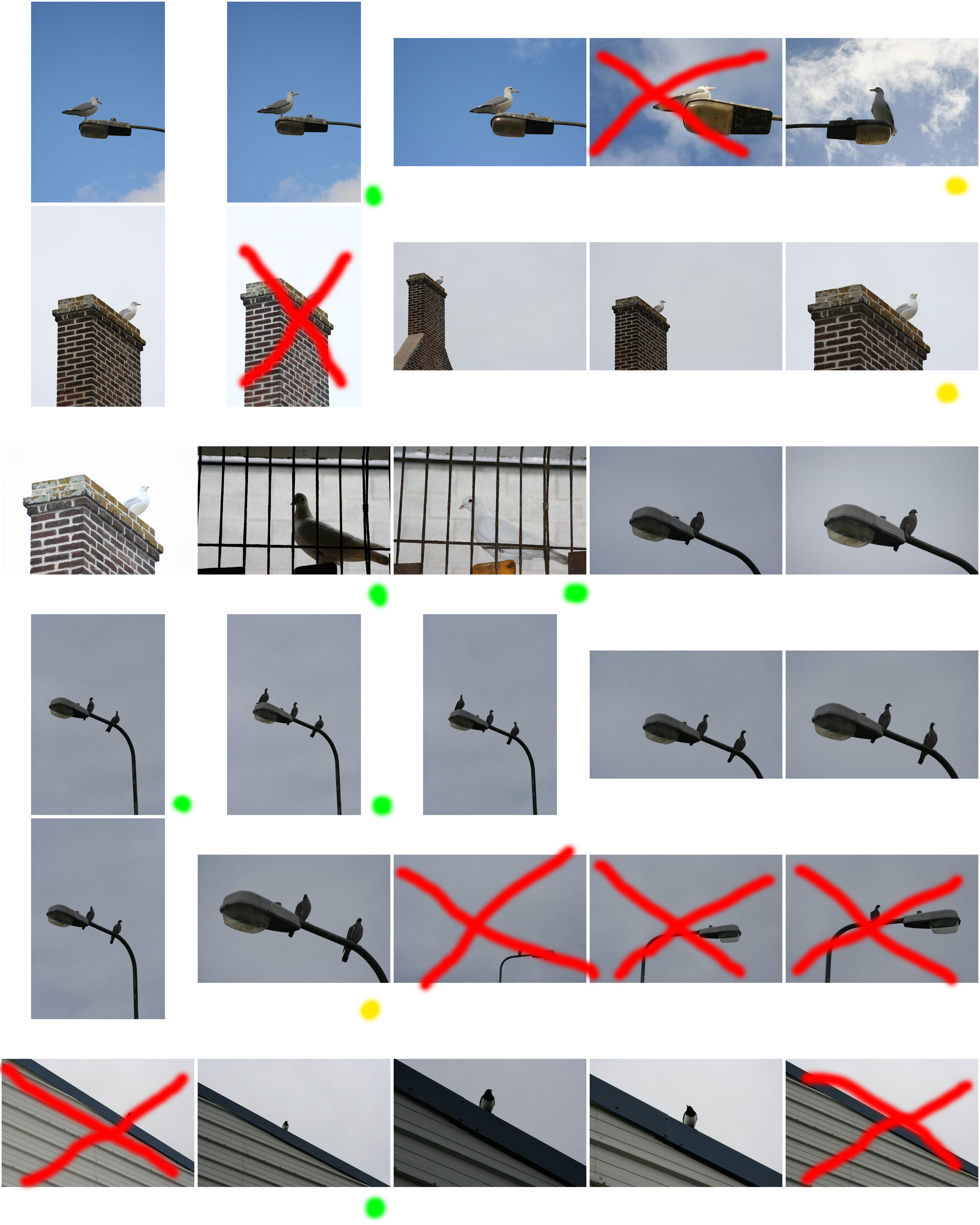

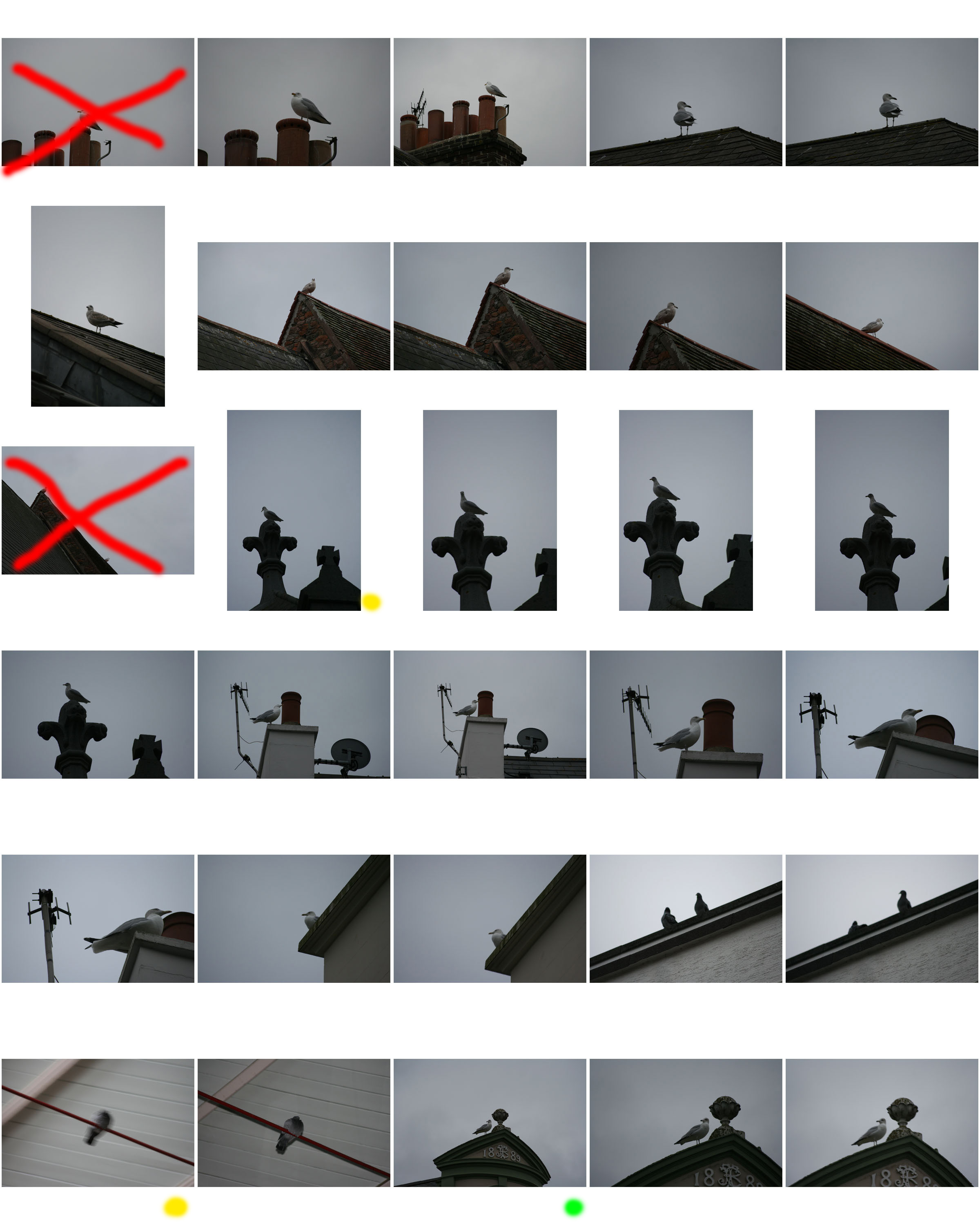

ESSAY INTRODUCTION
Is feminism [the equality of the sexes] still relevant today and how have artists throughout each wave of feminism reflected their agenda in their art??
Throughout art history, when female artists have been discussed their art has always been regarded as biologically determined, that all associations of femininity are linked to their style of painting and the subjects they choose to paint. Female artists were seen as the minority. This was stemmed from common ideologies and gender norms within society that restricted their subject matters in their paintings – only painting objects that reflected their femininity like flowers or portraits of miniatures, using mediums like pastels and watercolour. Moreover, women who were subjects within paintings were often objectified by the male artist simply for the pleasure of the receiver. Typically, within paintings of the nude women were often stripped of their sexual power so the spectator – typically a man – could monopolise their own sexual power and feel dominance of the submissive subject within a painting. Women within art have always been overlooked and restrained of their creativity because of male dominance within the patriarchal society. Even at present day, female artists struggle to create pieces of work that don’t have a hegemonic hold and connotations or histories of traditional ideas of femininity. This can be perceived as boundaries, so therefore female artists usually find other ways of creating art like installations and producing pictures. These are contemporary ways of producing art and therefore don’t refer to a particular or dominant gender.
sublime and water, Mythology, sirens and Atlantis
Atlantis– is a fictional island, mentioned throughout Platos work. It is representative from the antagonist naval power of the ancient Athens. It is an underwater hidden nation supposedly which sunk, submerging into the Atlantic ocean. Despite its minor importance in Plato’s work, the Atlantis story has had a considerable impact on literature. The idea of Atlantis itself is the concept of ‘lost’ it is the island subcontinent often idealised as an advanced utopian society, which holds wisdom and the capabilities to bring world peace. Atlantis is said to have captive dreamers and a new era of generations. Thousands of literary texts and media forms have been created and devoted to Atlantis and still to this day it remains a popular topic. Many people have attempted to venture into this world, along the way loosing many fortunes, even their lives. However, Although Atlantis is conceived as a peaceful utopia, Plato the philosopher spoken about previously believed it was very different. He propposed “Atlantis is not a place to be honoured or emulated at all. Atlantis is not the perfect society … Quite the contrary, Atlantis is the embodiment of a materially wealthy, technologically advanced, and militarily powerful nation that has become corrupted by its wealth, sophistication, and might.”Soon Platos morality became a legend about a city’s heroic rival of Athens, and its sunken civilisation. If Atlantis really existed today and was found intact and perhaps inhabited, its residents would be seen as aggressive and not welcoming to outsiders. Despite the clear indication and form of logic off the origin of fiction, many people over the centuries still claim that there must be some truth behind the myths,Speculation has gone on for many years and countless experiments have occurred looking through lost located continents all around the world. Every-time ‘experts’ venture into these locations they each form a set of evidence and arguments for its existence, however, many still have divided opinions if it is based around the Atlantic Ocean, Antarctica, Bolivia, Turkey, Germany, Malta and the Caribbean. There is still no explanantional evidence of Atlantis being real, it is still a myth no trace of it has ever been found, However despite that there are evidences that in oceanography and mapping the floor for the past decades. The ocean is capable of such vast depth, we do not have access to, we have still not searched around 90% of the ocean, the vast depths might somehow hide a sunken city or continent. Though there remains much mystery at the bottom of the world’s oceans, it is inconceivable that the world’s oceanographers, submariners, and deep-sea probes have some how missed a landmass “larger than Libya and Asia together.” Additionally tectonic plates demonstrate Atlantis as impossible, as the continents have drifted, the seafloor has spread overtime, and has not contracted to enable to perfect areas for a city to be able to rest. There would simply be no place for Atlantis to sink into. “The geology is clear; there could have been no large land surface that then sank in the area where Plato places Atlantis. Together, modern archaeology and geology provide an unambiguous verdict: There was no Atlantic continent; there was no great civilisation called Atlantis.” I do find it interesting however How Plato was such a influential philosopher, and through my work I have been influenced by many philosophers too. I might look further into his work and see if I could too include what he has spoken about into my work. I believe as I am already discussing the PAIN and PLaEASURE which water and the sea has, and how it connects into elements of the sublime, and romanticism. It also links to such a strong history of legends such as Atlantis, photographers who have studied and looked at work from the following myths, they capture some old structure, however non of which have been proof of Atlantis.

sirens: Traditionally sirens are half-bird, half beautiful maidens, they were singing enchantresses capable of luring passing sailors to their islands, and sequently, to their doom. they were also seen as daughters of the river god, they were fated to die if anyone should happen to survive their singing at the time. When Odysseus passed them by unharmed, they hurled themselves into the sea and were drowned. Traditionally, the Sirens were daughters of the river god Achelous and a Muse. Many claim that the sirens are actually daughters of powerful gods for instance, the daughter of Zeus and Demeter. It is said the sirens were originally given wings yet these were taken away as a punishment. The sirens had a seductive song, this has appeared similarly to Atlantis in many ancient greek myths. The sirens can be found living in small islands. It is said in order for men to not be seduced by the sirens singing, they had to block their ears with wax. The hero wanted to hear their song,Some of which bound themselves to the mast so they would not be killed when they go into the water. Sirens have been seen in many forms, this being as a bird, mermaid or naked women living amount the water. I think For my inspiration for this shoot i could focus on the deep threatening and also power that a women can hold when surrounded by water. I believe I could focus on both the mermaid and human aspect and show a femininity within her being submerged within the water itself. Stories to do with the mythology of sirens and Atlantis: I want to look into past stories, as this might cause an inspiration for a further shoo which I could produce. Plato would certainly have heard of this disaster and realising the theatrical possibilities might have, with a dash of dramatic license and a little imagination, used the chain of events as a template for his own ends. Sir Desmond Lee a renowned classical historian certainly thought so when he stated “We must remember Plato’s purpose—to describe a rich, powerful and technologically advanced society to serve as an opponent of his ideal Athens. He had a fertile imagination and in Atlantis produced the first work of science fiction.”

I believe I could portray a narrative throughout each individual image I created, through the inspiration of sirens and mermaids alike. However personally I belive that the overall photoshopping, and clear fake atmosphere of mermaids is not exactly sublime to my mind, as their is no truth. It is not exactly breadth to taking photos which are not painful and a false sense of reality. Because of this I do not think myself re creating under water creates would exactly help achieve the same atmosphere throughout my own work. I could use the same themes within my work, such as the deceiving beauty the sirens had. I could when doing an underwater shoot capture a direct reality, such as focusing on actually fears found within the sea. Such as the depth of the water, and the real existing creates that would do harm. I think this is what I should talk about of this research, as otherwise I do not think the direct re-createment of mythological would work to my advantage.
Photoshoot Plan
First Photoshoot
- I want to go back to La Motte and take landscape photographs whilst looking at the archival images I’ve collected.
- I could take inspiration from the archival images or take the images in the same place to show the effects of time on the area.
- This is taking inspiration from Chrystel Lebas in her series ‘Field Studies’ where she goes back to the same areas Edward Salisbury visited and takes photographs in the same way to show how the environment has changed.

Second Photoshoot
- I will revisit La Motte and collects more objects I find around the area
- I will then photographs these images in a studio to develop from my previous photoshoot and work on improving the images I take.
Some images from previous studio photoshoot:

- I will experiment by using different lighting techniques and different arrangement of the objects.
- As well as experimenting with the editing of the images in the style of Chrystel Lebas like in my previous shoot or in other ways that I haven’t tried.
Third Photoshoot
- I will focus on going to La Motte in different weather conditions so my images vary.
- This will make the atmospheres in the images different from one another.
- I will also focus on taking more close up images as well as landscape images of the area to create variety in the way the images are taken in my photobook.
- This is taking inspiration from Edward Salisbury where he photographed some close up images looking at texture when he visited an area.

